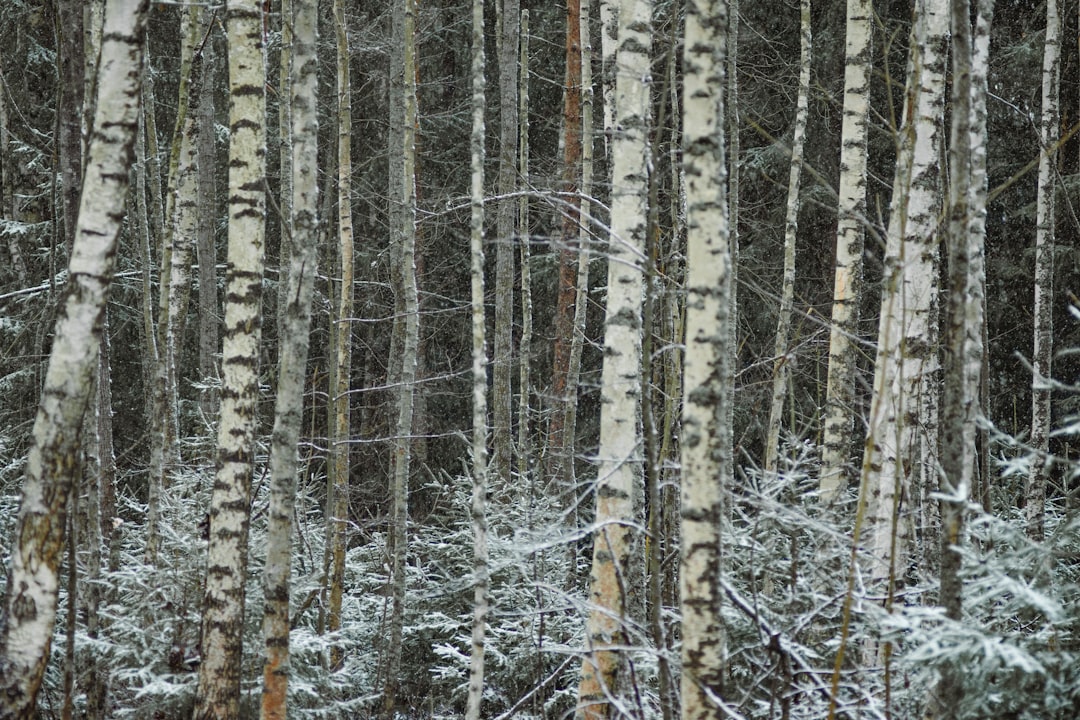Quick Answer: A climax community is an ecological community where populations of plants or animals remain stable and exist in balance with each other and their environment. It represents the final stage of ecological succession, an uninterrupted process leading to a stable state where changes are slow and steady.
In the fascinating world of ecology, the term climax community refers to a unique stage where nature seems to stand still. Imagine a lush, dense forest or a vibrant coral reef where all elements of the ecosystem have found a delicate balance. Here, in these enduring states, life flourishes in equilibrium, embodying the final act in the long drama of ecological succession.
Succession is like nature’s own methodical dance, where life stages follow one after another, each setting the stage for the next, until the climax community is reached. This process is not a hurried affair; it evolves over years, decades, and sometimes centuries, showcasing nature’s incredible resiliency and adaptability.
What makes a climax community so special is its stability. It’s not that these areas are static or unchanging, but rather, they change at a pace that’s almost imperceptible to us, maintaining a type of ecological balance that can theoretically last indefinitely if undisturbed by catastrophic events or human intervention.
Let’s dive deeper into understanding the intricate beauty and complexity of climax communities, and explore how these ecological marvels function as a testament to nature’s enduring strength and diversity.

Understanding Climax Communities
When we talk about climax communities, we’re diving into a concept that sits at the heart of ecology. It’s like the final scene in a long movie, where all the plot lines come together, and everything finds its place. Let’s break it down in a simple way.
Definition
A climax community is essentially nature’s final draft. It’s an ecological community that has reached a stable stage after a series of transformations, also known as succession stages. Picture a garden that, over years, naturally evolves from a few scattered seeds to a fully developed, diverse ecosystem. That final, balanced garden is what ecologists call a climax community.
Ecological Balance
In a climax community, there’s a kind of ecological harmony. Plants, animals, and microorganisms have all found their niche, creating a self-sustaining network where life cycles are in sync. It’s like a well-rehearsed orchestra, where every member knows their part and plays it perfectly. This balance is critical because it means the community can maintain itself over time without needing outside interference to keep it going.
Final Stage
Reaching this final stage isn’t a quick process. In fact, it’s the culmination of many years, sometimes even centuries, of gradual changes. From bare rock or cleared land, through stages of pioneer species making their mark, to intermediate forests growing – each step paves the way for the next. Eventually, the ecosystem hits a point where it doesn’t fundamentally change much anymore; it’s reached its climax.
This doesn’t mean it’s frozen in time, though. A climax community can still experience minor shifts and changes, but its core structure remains intact unless a significant disturbance happens, like a wildfire or human interference.
Understanding the climax community definition helps us appreciate the resilience and complexity of nature. It shows us that ecosystems go through a lot of growth and change before reaching a point of stability.
For anyone fascinated by how ecosystems work and maintain their balance, climax communities are a testament to the power and adaptability of nature. They remind us of the importance of protecting our environment, as these climax communities are often the result of centuries of natural progression.
To explore more about how these communities form and why they’re crucial for our planet, check out this detailed explanation on Quora.
We’ll dive into some real-world examples of climax communities and highlight some of the species that play pivotal roles in these ecosystems. Stay tuned to discover the incredible diversity and ecological importance of climax communities.
Examples of Climax Communities
Exploring the concept of climax communities gives us a window into the diverse and stable ecosystems that exist around the globe. Each example below showcases unique characteristics that have reached ecological equilibrium, embodying the climax community definition. Let’s delve into these fascinating ecosystems.
Daintree Rainforest

The Daintree Rainforest, located in Queensland, Australia, is a prime example of a climax community. Spanning from the mountains to the coast, this rainforest is one of the most complex on Earth. It’s home to a myriad of plant and animal species, many of which are found nowhere else. The Daintree has reached a state of ecological equilibrium, where the species composition and environmental conditions have stabilized over millennia. This rainforest demonstrates the resilience and diversity that climax communities can achieve.
Northern Forests
The vast northern forests, stretching across continents from North America to Eurasia, are another testament to climax communities. These forests, dominated by species like the white spruce and Canadian hemlock, have adapted to the cold, harsh climates. They support a complex web of life, from large mammals like bears and wolves to countless bird species. The stability and adaptability of these forests make them critical for maintaining biodiversity and ecological balance in the northern hemisphere.
Old-growth Forests

Old-growth forests, found in various parts of the world, are quintessential examples of climax communities. Whether it’s the ancient redwoods of California or the towering cedars in the Pacific Northwest, these forests have stood the test of time. They are characterized by large trees, deep organic soils, and a multi-layered canopy that supports diverse flora and fauna. Old-growth forests are not static; they continue to evolve, but at a pace that maintains a balance with their surroundings. Their complexity and longevity highlight the climax community’s definition of reaching a stable, self-sustaining state.
Each of these examples – the Daintree Rainforest, northern forests, and old-growth forests – illustrates the beauty and complexity of climax communities. They show how ecosystems can reach a point of balance where biodiversity thrives. Understanding these communities helps us appreciate the importance of conserving such irreplaceable natural treasures.
Let’s focus on some of the key species that play a critical role in maintaining the stability and health of climax communities. Stay tuned to learn about the unique adaptations and roles of climax species in these ecosystems.
Climax Species Highlight
In the tapestry of a climax community, certain species stand out for their significant roles and remarkable adaptability. Among these, the White spruce and Canadian hemlock are prime examples that highlight the intricate balance and resilience within these ecosystems.
White Spruce
The White spruce, with its towering presence, is not just a tree but a cornerstone species in many northern climax forests. It’s known for its ability to withstand cold climates and poor soil conditions, making it a master of adaptation. This species supports a wide range of wildlife, from birds that nest in its branches to mammals that seek shelter beneath its canopy. Its role in the climax community goes beyond just providing habitat; it plays a crucial part in nutrient cycling and soil stabilization.
Canadian Hemlock
Similarly, the Canadian hemlock serves as a foundational species in many climax communities, especially in the eastern parts of North America. Its dense foliage creates a cool, shaded forest floor, crucial for the survival of numerous understory plants and fungi. This shading also helps in maintaining a moist environment, promoting a diverse micro-ecosystem within the forest. The Canadian hemlock’s ability to thrive in the shadow of other trees until gaps in the canopy present an opportunity for growth is a testament to its adaptability and patience, hallmark traits of climax species.
Adaptation
Both the White spruce and Canadian hemlock exemplify the essence of adaptation in climax communities. Their survival strategies allow them to not just endure but flourish in their respective environments, contributing to the ecological equilibrium of their communities. These species have developed specific traits over time, such as tolerance to shade, cold, or nutrient-poor soils, which enable them to occupy their ecological niches successfully.
The existence and prosperity of climax communities rely heavily on such adaptable species. Their presence ensures the stability and sustainability of the ecosystem, making them invaluable not only to their immediate environment but also to the global biodiversity network. Their roles in carbon sequestration, water cycle regulation, and providing habitat underscore the interconnectedness of life and the importance of preserving these climax communities.
In understanding the climax community definition, it becomes clear that species like the White spruce and Canadian hemlock are not merely occupants of their ecosystems but are deeply woven into the fabric of life that sustains the climax community.
As we delve further into the dynamics of climax communities, it’s crucial to recognize the impact of various factors that influence their formation and persistence. From natural disturbances to human interference, several elements can alter the course of ecological succession and the eventual establishment of a climax community.
Learn more about climax communities
Continuing on, we will explore these factors in detail, shedding light on both the challenges and the resilience inherent in these complex ecosystems.
Factors Influencing Climax Communities
Disturbances and human interference play significant roles in shaping climax communities. Events like fires, natural disasters, or even human activities can disrupt the ecological balance, leading to changes in the community structure. Let’s break down these factors to understand their impact better.
-
Disturbances: Natural events such as storms, earthquakes, or fires can dramatically alter the landscape. These events can destroy large swathes of vegetation, creating opportunities for new species to establish and potentially altering the succession path towards a different climax community.
-
Human Interference: Activities like logging, agriculture, urban development, and pollution can significantly impact climax communities. For example, deforestation not only removes the existing vegetation but also affects the local climate and soil conditions, making it challenging for the original community to re-establish.
-
Fire: While often viewed negatively, fire can be a natural part of some ecosystem’s successional pathways, clearing away dead material and enabling certain species adapted to fire conditions to thrive. However, the frequency and intensity of fires, especially when influenced by human actions, can lead to irreversible damage and prevent the establishment of a climax community.
-
Secondary Succession: This occurs after a disturbance that doesn’t eliminate soil and seed banks. For example, after a forest fire, the surviving seeds and roots can sprout anew, leading to a relatively rapid restoration of the climax community, albeit potentially with some changes depending on the severity and nature of the disturbance.
-
Primary Succession: This process starts from barren landscapes where no soil exists, such as lava flows or areas left after a glacier recedes. Here, succession takes a much longer time as soil needs to form before plants can grow. Primary succession shows how resilient and adaptive nature is, but also how fragile, as any disturbance resets the clock.
Understanding these factors is crucial in protecting and managing natural habitats. It highlights the delicate balance within ecosystems and the importance of considering both natural and human-induced changes when discussing conservation strategies. By recognizing the impact of these influences, we can better appreciate the complexity and resilience of climax communities.
Learn more about climax communities
Frequently Asked Questions about Climax Communities
When it comes to understanding the environment around us, some terms might seem complex, but they’re really not. One such term is climax community. Let’s break it down with some common questions you might have.
What is the meaning of climax community?
Imagine a forest or any natural area that has grown and changed over many years. Eventually, it reaches a point where it doesn’t change much anymore. The plants, animals, and other living things have settled into a kind of balance with each other and their surroundings. This stable state is what we call a climax community. It’s like the community has matured and is now in its prime, living its best life without needing major changes.
Which example describes a climax community?
Think about the Daintree Rainforest in Queensland, Australia. It’s a vast, vibrant rainforest that’s home to unique plants and animals, some of which can’t be found anywhere else in the world. The Daintree has reached a stable, balanced state, making it a perfect example of a climax community. It’s like the rainforest has found its perfect recipe for living harmoniously, and it sticks to it.
What is an example of a climax species?
A climax species is a type of plant or animal that thrives in the stable conditions of a climax community. For example, the Canadian hemlock is a tree often found in mature forests in North America. It’s well-adapted to living in the shade of other trees and can live for a very long time, making it a classic example of a climax species. These species are like the wise elders of the forest, having figured out how to live well in their environment.
In conclusion, a climax community represents nature’s way of finding a stable, balanced way to exist over time. It’s a fascinating concept that reminds us of the resilience and complexity of the natural world. Understanding these communities helps us appreciate the delicate balance of ecosystems and the importance of preserving them for future generations.
Learn more about climax communities
Conclusion
As we wrap up our exploration into climax communities, it’s crucial to appreciate the broader implications these ecosystems have on our understanding of sustainability and ecological importance. Climax communities serve as vivid reminders of nature’s intricate balance and resilience. They highlight the ultimate goal of ecological succession, achieving a stable and harmonious state where life thrives in equilibrium with its surroundings.
Sustainability is a concept deeply intertwined with the essence of climax communities. These ecosystems demonstrate the potential for natural environments to reach a state of lasting stability and self-sufficiency. By studying these communities, we can learn valuable lessons about conserving biodiversity, protecting habitats, and promoting practices that align with the natural cycles of our planet. It encourages us to think critically about our impact on the world and to strive for a more sustainable coexistence with the myriad of life forms that call Earth their home.
The ecological importance of climax communities cannot be overstated. They are often rich in biodiversity, serving as a refuge for various species, some of which are rare or endangered. These communities play a pivotal role in maintaining ecological processes, such as carbon sequestration, nutrient cycling, and water filtration. They also offer critical insights into the resilience and adaptability of ecosystems in the face of environmental changes and disturbances.
At Principal Preservation Services, we understand the value of long-term stability and balance, not just in nature but in our financial lives as well. Just as climax communities represent the culmination of ecological succession, effective retirement planning symbolizes the achievement of financial security and sustainability. We are committed to guiding you towards reaching your own “climax community” in financial terms, where your investments and savings are in harmony with your retirement goals and aspirations.
In conclusion, the journey through the concept of climax communities offers profound insights into the resilience of the natural world and the principles of sustainability that can inform our actions and decisions. Let us carry with us the lessons learned from these remarkable ecosystems, applying them both to the preservation of our planet and the stewardship of our personal financial futures. Together, we can strive for a world where both nature and humanity flourish in balance and harmony.










